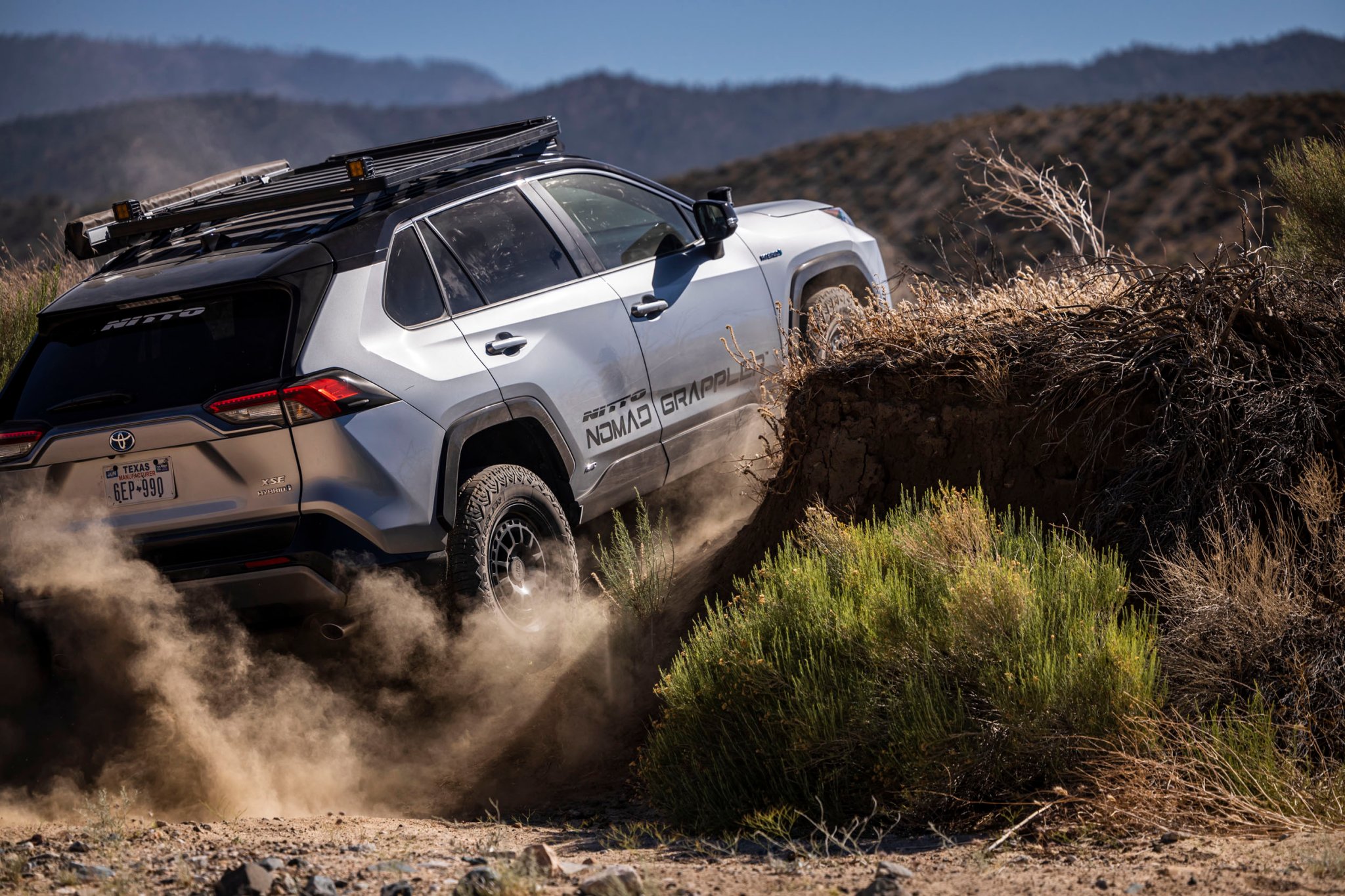

We may earn revenue from the products available on this page and participate in affiliate programs. Learn more ›
When Nitto Tire invited us out to Hungry Valley, California, to sample its new crossover-centric light off-road tire, I took it as an opportunity to learn a thing or two about properly off-roading some of the more rugged offerings in the vanilla crossover and SUV segments. Light off-roading has become something of a mania in the current car market and even mild capability can open up a new world to SUV buyers. You would be surprised how far a basic SUV can get on an off-road trail with the right setup.



Called the Nomad Grappler, the new tire aims square at the Falken Wildpeak A/T Trail as a tire designed specifically for cars like the Subaru Crosstrek. It’s a normal metric of tire, meaning that it doesn’t have the heavy-duty LT-metric rating that comes with more aggressive all-terrain tires. You could get an LT tire in crossover sizes, but it adds a serious amount of weight and harshness, especially for lighter vehicles. That weight comes from more plys, or layers of rubber and other materials, which helps puncture resistance. Still, when an SUV is lighter, it doesn’t need an LT, hence the Nomad Grappler.
The truth is that these kinds of tires work really well and add a lot of capability to otherwise milquetoast vehicles. Hell, they can turn a regular Subaru Impreza into a rally car, or turn a basic SUV into a minor-league trail crawler. One of the cores of off-road capability, along with the tire design, is setting the tires to the appropriate pressure for off-roading. This is called airing down. A similar thing can happen with tires during track days, which I wrote about.

Before the journalists in attendance set out in a selection of crossovers and SUVs into the Hungry Valley off-road park, we were briefed on airing down. While many people air down tires with a simple tire pressure gauge, a pen, or even a small pebble, I was introduced to a new method of airing down using automatic tire deflators. It might sound complicated but actually couldn’t be more simple; they’re metal tubes with set screws that deflate the tire to the desired pressure.
The importance of airing down cannot be overstated. It prevents punctures, greatly increases traction thanks to a larger, more flexible contact patch, and it smooths out a normally rough off-road ride. Wisdom on the correct pressure varies depending on the vehicle and trail, but a good starting point is 18 psi. Going lower or higher is totally normal, but the veteran trail instructor that gave us a rundown at the event liked 18 psi as a starting point. It exists at a sweet spot of trail feel, traction, and heat management.

When a tire is aired down, it flexes and bulges with the trail a lot more than a normally inflated tire. Those distortions and movements cause a lot of heat to be generated, which means a higher chance of tire failure. Too little tire pressure means more flex and more heat, making it more appropriate for lower speed trails. If there needs to be more tire stability, a bit more pressure helps. It’s all about figuring what works best for the car and trail.
Nitto had a selection of the current pseudo-rugged crossovers for us to drive. The Ford Bronco Sport, Subaru Crosstrek, Subaru Outback, and Toyota Rav4 TRD were the rides I drove, all aired down to 18 psi. With a pre-planned route on some beginner trails with minor obstacles, I felt a familiar admiration for the capabilities of a slightly lifted all-wheel-drive vehicle. You don’t need much to have a hoot off-road. I’d wager to say the Outback on the aired-down Nittos did more than enough for folks who think they need a Toyota 4Runner. Sure, it might not survive an encounter with a sharp rock, but it’ll get through intimidating climbs, descents, and suspension flex moments. I will say I was impressed at how much of a non-event the off-roading was. Clearly, the tires work well and have plenty of traction. As a bonus, they rode well and look reasonably aggressive.

The key to off-roading normal stuff like this is slowing down and being cognizant of the real capabilities of the vehicle. Don’t treat it like a Ford Raptor, no matter how well it rides off-road. That svelte suspension is not designed to handle heavy-duty trail work. Rather, it’s designed to not spill herbal teas on a slightly rough fire road in a national park. Treat it with some respect and everything will be fine.
I always rationalize obstacles as driving a lowered car into a steep driveway. Approach berms and dips at an angle, never head on. Going head-on in an Outback is a sure way to get stuck. It’s best to drive the car diagonally. For example, when climbing over a tall dirt berm, balance the car on one front tire and one rear tire. This will prevent high siding and getting stuck by nature. Also, flexing out the suspension feels cool.
None of us need an insane trail rig to go see the world. Some decent tires, a bit less air pressure, and a bit of skill will get anybody with a crossover far. Seriously, it’s way cooler to have a filthy Outback than an immaculately clean 4Runner. Run what you brung.